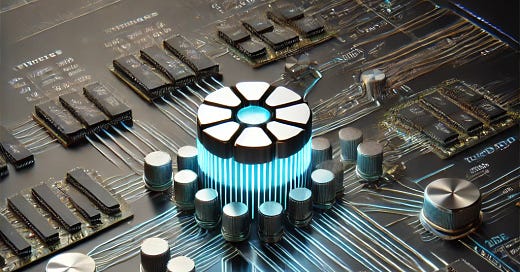Threads in Linux: A Comprehensive Guide
In modern computing, threads play a vital role in achieving concurrency and parallelism. Threads are lightweight entities within processes that share the same memory space but can execute independently. This blog explores what threads are, their advantages, how the Linux kernel manages threads through the Thread Control Block (TCB), their lifecycle, and best practices for developers and administrators.
What is a Thread?
A thread is the smallest unit of execution within a process. Unlike processes, threads within the same process share:
Memory space: Threads share the same address space, global variables, and heap.
Open file descriptors: Threads can access the same files or sockets as other threads in the process.
Execution privileges: Threads inherit the process's user ID (UID) and group ID (GID).
Key Characteristics of Threads
Lightweight:
Creating and switching threads is faster and requires fewer resources compared to processes.
Shared Resources:
Threads within a process share memory and system resources, enabling efficient communication.
Independent Execution:
Each thread has its own execution context (e.g., program counter, stack, and CPU registers).
Advantages of Threads
Improved Performance:
Threads enable better utilization of multi-core processors by allowing parallel execution of tasks.
Example: A web server can use threads to handle multiple client requests simultaneously.
Efficient Communication:
Since threads share the same memory, they can communicate without the overhead of inter-process communication (IPC).
Scalability:
Threads can scale well in multi-core systems, distributing workloads across available cores.
Responsiveness:
Threads allow GUI applications to remain responsive by delegating long-running tasks (e.g., file downloads) to background threads.
How the Kernel Manages Threads
The Linux kernel manages threads using a data structure called the Thread Control Block (TCB). Threads are treated as lightweight processes in Linux and are managed similarly to processes, with each thread having its own TCB.
The Thread Control Block (TCB)
The TCB is a data structure that stores information specific to a thread. It is linked to the Process Control Block (PCB) of the parent process to share common resources.
Relationship Between PCB and TCB
The Process Control Block (PCB) holds global information for the entire process, including all threads.
Each thread within the process has its own Thread Control Block (TCB), which stores thread-specific data (e.g., program counter, stack pointer).
Shared Resources:
Memory mappings, file descriptors, and process-level attributes (e.g., UID, GID) are stored in the PCB and shared by all TCBs linked to it.
Thread Lifecycle
Similar to processes, threads have a lifecycle, but transitions are lighter and faster.
State Transitions
New → Runnable: The thread is created and added to the Ready Queue.
Runnable → Running: The scheduler picks the thread from the Ready Queue and assigns it to the CPU.
Running → Waiting: The thread waits for an event (e.g., I/O or a signal).
Running → Terminated: The thread completes execution and terminates.
Utilities for Managing Threads
Linux provides tools and utilities for monitoring and managing threads:
Recommendations for Developers and Administrators
For Developers
Minimize Synchronization Overhead:
Use fine-grained locks or lock-free data structures to reduce contention.
Avoid deadlocks by following consistent locking order.
Use Thread Pools:
Reuse threads for multiple tasks instead of creating and destroying threads repeatedly.
Thread Safety:
Ensure shared resources are accessed safely using mutexes, semaphores, or atomic variables.
Leverage Libraries:
Use libraries like
pthreador higher-level abstractions (e.g., OpenMP, C++ threads) for easier thread management.
For Administrators
Monitor Thread Usage:
Use tools like
htoporpsto track thread count and ensure threads don’t overwhelm system resources.
Set Limits:
Configure thread limits in
/etc/security/limits.confto prevent runaway processes from creating excessive threads.
Debugging:
Use
gdband/proc/<PID>/taskto debug issues in multi-threaded programs.
Analyze Performance:
Profile applications using tools like
perfto identify thread-related bottlenecks.
Conclusion
Threads are powerful tools for achieving concurrency and parallelism in modern applications. By understanding how threads are managed by the Linux kernel through Thread Control Blocks (TCBs) and their relationship with the Process Control Block (PCB), developers and administrators can write efficient, scalable, and robust applications. Proper monitoring and debugging utilities further ensure thread safety and performance optimization.
Threads are the backbone of many high-performance systems, and mastering them is crucial for both system architects and developers.








